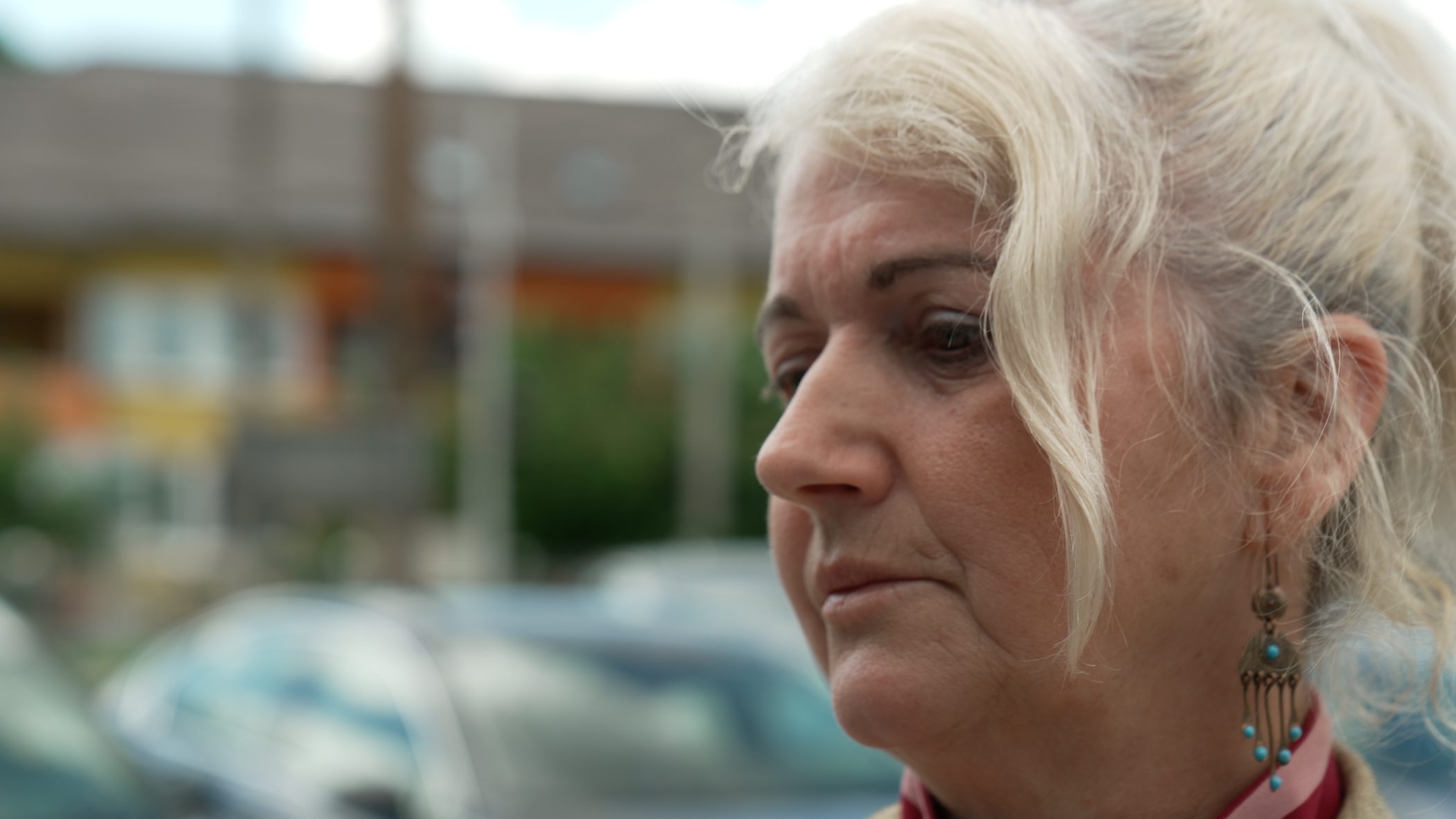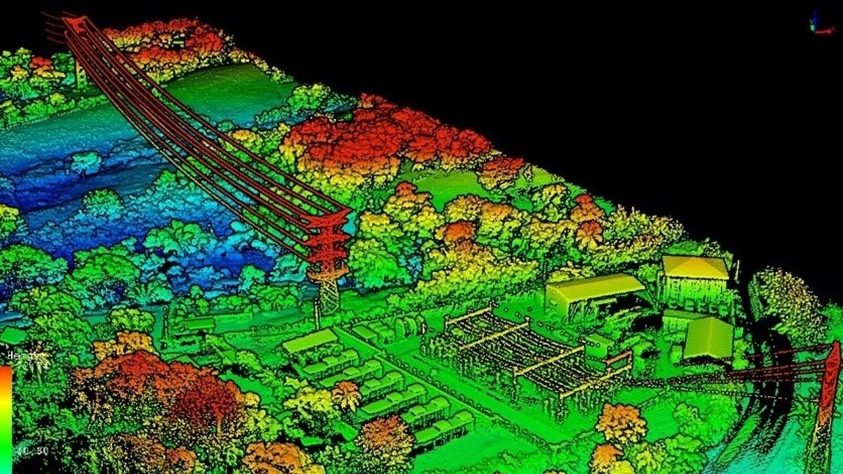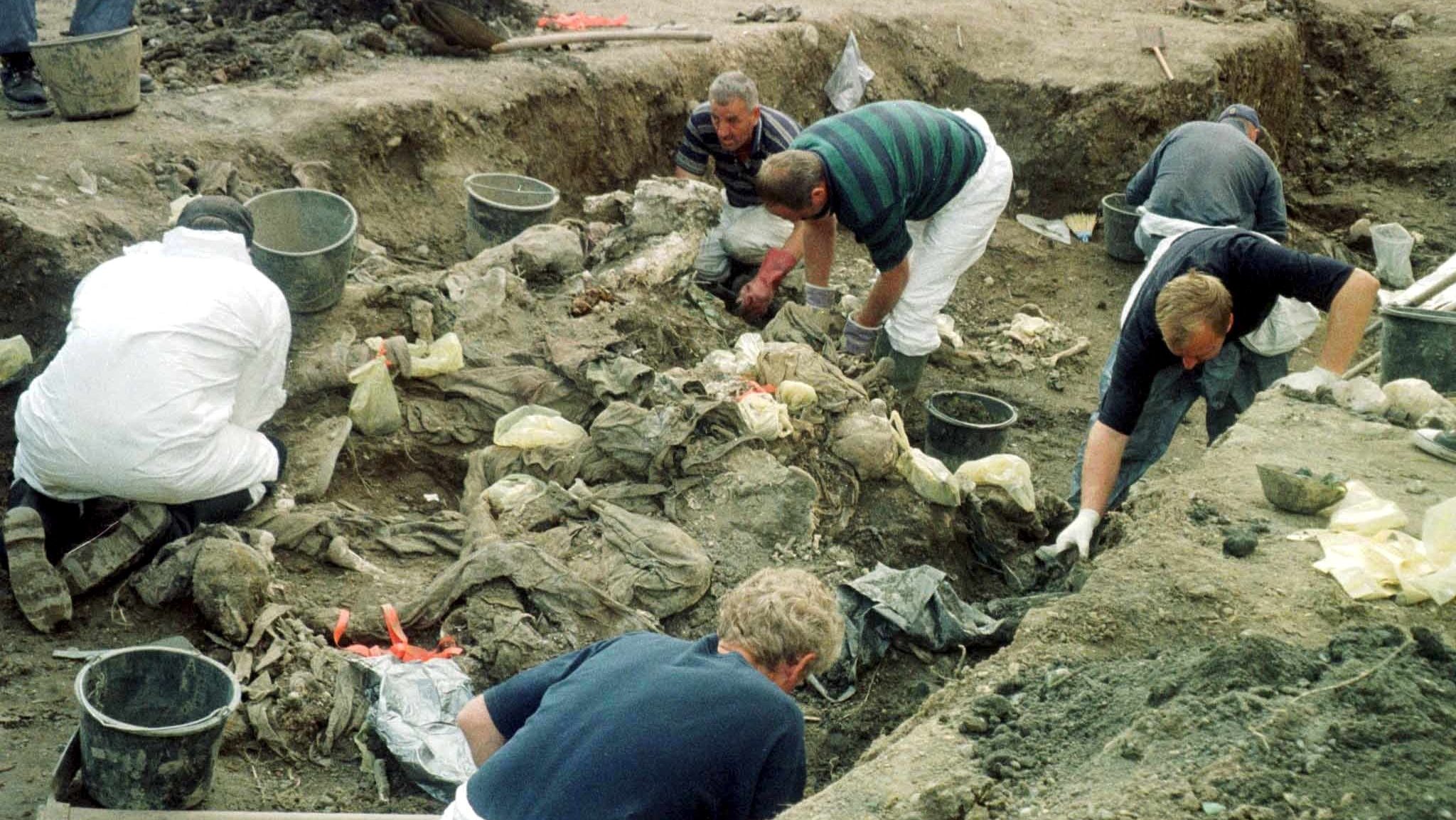This post is also available in: Bosnian
BIRN BiH reached out to Ismet Musić, Head of the Regional Office of the Missing Persons Institute of Bosnia and Herzegovina (MPI BiH) in Tuzla. After several unanswered calls, an anxious Musić picks up the phone and explains that he is on a field mission in Pobuđe, where they have been unsuccessfully searching for days for the mortal remains of one individual.
“A man swore on his life that the burial site was at this exact location. We excavated not just three dugouts but several dozen, and we found nothing. We stayed late into the night for two or three days, searching the terrain,” says Musić, who believes that ground surface changes over the years may be to blame.
A long-time investigator, Musić is committed to finding the country’s missing, including his brother Mujo and cousin Mustafa, who were abducted from Bijeli Potok. He believes that search dogs and new technologies could aid in their search.
“We’ve gone to every grave exhumed since 1996, both primary and secondary. Soil samples are taken and used for training. After that, dogs are deployed on the ground, where a teaspoon of the grave soil is buried. The dog is released to find that soil contaminated with the scent of decay. If we’d had those dogs in Pobuđe, instead of excavators digging for days, we would have worked faster and at reduced costs,” says Musić, recalling his previous experience working with search dogs.
At the time, these efforts were funded by Norwegian People’s Aid. However, according to MPI BiH Board of Directors member Saliha Đuderija, the project was discontinued after funding was halted from USAID. In her statement to Detektor, she also noted that MPI BiH currently lacks trained handlers to work with search dogs.
“These methods are fragile and depend heavily on the expertise of handlers, and their success is relative, because we have long been working primarily with bones,” said Đuderija.
The feasibility of working with search dogs is also questioned by Sandra Šoštarić, Forensic Coordinator of the Western Balkans Programme at the International Commission on Missing Persons (ICMP), which assists MPI BiH with exhumations.
“Search dogs are useful at specific spots where they detect the presence of certain chemical compounds, but an excavation still needs to be carried out to confirm the presence of human remains. The problem arises when a dog passes through an area and doesn’t detect anything. This doesn’t exclude the possibility that remains are there,” explained Šoštarić, whose team, with the help of a search dog, discovered a body buried about one metre underground on Igman Mountain.
She further explained that the use of search dogs is preceded by investigative activities and the verification of information obtained from witnesses about potential mass grave sites. Šoštarić added that this method is quite costly, requiring handlers and dogs to work around the clock and conduct regular field training.
According to Đuderija, the use of search dogs and other technologies to locate the remaining missing persons in BiH require adequate funding, and the state institutional budget for this year has yet to be adopted.
Families Dissatisfied with Current Search Efforts

Memorial Center Gornja Kalesija – Memići. Photo: Detektor
During the war, Derva Halilović from Đulići lost her husband and two sons, as well as her father, four brothers, and four nephews. They were abducted along with a group of others from Bijeli Potok near Zvornik and killed.
“My husband was the first to be found. I identified him by his clothing at the Commemorative Centre in Tuzla. I’ve found and buried the remains of most of my family members, but my youngest son Izudin is still incomplete. It would mean a lot to me to be able to find and bury the rest of his remains,” Derva says through tears, explaining that due to health problems, she can no longer leave her home.
“Only I know what my life is like,” she adds. Her older son Šemsudin was born in 1971, while Izudin was only 16 years old.
According to data from the Association of Families of Detained and Missing Persons from Zvornik Municipality, 675 men and boys were taken from Bijeli Potok. So far, 431 have been found and identified, while the search for the others continues.
Suvada Selimović, also from Đulići, says that the families are dissatisfied with the progress made in locating the missing in this area.
“It’s been 33 years, and many families have not found a single family member. Many mothers have died without ever finding peace. In the past few years, there have only been one or two victims buried at each funeral,” notes Selimović.

Suvada Selimović. Photo: Detektor
She calls on institutions to be more proactive, and for those who know the locations of graves to come forward:
“You have to put on your boots and a raincoat and go searching. I know it’s hard to get reliable information, and some of it turns out to be false, but we, the ordinary family members, cannot do their job for them.”
Musić believes that MPI BiH should acquire the necessary technologies to make searches more successful, such as ground-penetrating radar (GPR) and LiDAR technology, which is used to map 80 percent of the country’s territory.
According to the Ministry of Civil Affairs, the LiDAR mapping project in BiH is now in its final phase. This technology, used to scan topography beneath dense vegetation, has helped uncover the ruins of ancient civilisations in other parts of the world, such as Mexico.
Speaking of LiDAR, Šoštarić explains that it is used to capture the topography of terrain. She notes that mass graves were created during the 1990s and that no earlier photographs exist for comparative reference, to detect later changes in the terrain. Regarding GPR, she points out that it can’t be used through all types of soil, such as clay, and is unsuitable for uneven terrain.
“The International Criminal Tribunal for the former Yugoslavia had ground-penetrating radar, but they concluded it was limited due to the soil type in Eastern Bosnia. The archaeologists ultimately deemed it useless back in the 1990s,” says Šoštarić, adding that all methods are effective only when used in combination, and that significant funding is required to purchase such equipment.
“Software will be made available early next year to the geodetic services of the Federation of BiH, the Republika Srpska, and the Brčko District. All we need is to conclude an agreement with them and request terrain coordinates. No money is needed — we just have to establish institutional cooperation,” says Musić.
He adds that every major construction company possesses GPR technology, used to scan the terrain before building operations.
“Everything here in Bosnia is within our reach. No additional training is needed. We could go to a construction company and ask them to lend it to us a few times for testing. If it proves effective, we can make a contract. Even if we pay them, it will cost far less,” says Musić.
In the process of searching for more than 7,000 missing persons, Šoštarić stresses the need to re-examine areas where mass graves have already been found. She cites the example of the forests around Srebrenica, where a column of men attempting to flee genocide travelled toward free territory.
“It’s possible that there are multiple mass graves that still haven’t been discovered. Most of the large primary and secondary graves related to the genocide were identified based on satellite imagery and subsequent investigative work, including tracing those who provided excavators for digging. Investigators should revisit some of the witnesses and perpetrators to see what further information might be uncovered,” emphasises Šoštarić.
According to Đuderija, the MPI BiH is drafting a 2026–2030 strategic plan, with a key priority being the introduction of new technologies, such as GPR and LiDAR technology. The plan also includes a new analytical approach for additional searches of wider areas where human remains have already been found.
“The spatial plan and search map need to be redone, regardless of the locations we have already covered. The key here is training, analytics, and developing suitable software. We have software that points us to the area, the place, the location of everything we have found and are still searching for. But we lack the second component—linking it with new technology—because technology depends on humans, but even more on the speed of data processing,” explains Đuderija.
Systematic Review of Judicial Evidence

Terrain recorded with LiDAR technology. Photo: Ministry of Civil Affairs of BiH
A possible future method for locating missing persons, according to Đuderija, is the systematic review of all documents and databases to analyse information that may have previously seemed insignificant. This includes continuing to search through the records of the ICTY and other courts, as well as the testimonies of numerous witnesses.
“Some of these testimonies might not have been used as trial evidence because the focus was on the perpetrators rather than the victims. We would analyse events to identify information that could provide indicative leads for searches—areas or sites where people may have been taken, killed, and buried,” says Đuderija, noting that MPI BiH possesses databases containing information that needs to be reanalysed.
Musić is sceptical that information provided by other institutions will be of much help.
“Over the past two years, I’ve received 51 locations from these institutions, and not a single body, not a single bone, was found. Some will say that SIPA and OSA are intentionally not involved. Everyone is involved. All the accounts of war crimes are known—what happened and where. What’s missing are the specific pieces of information about where people were buried and hidden,” says Musić.
With additional cooperation from judicial institutions, information about mass graves could be sought from individuals who have already been convicted, explains Đuderija.
“We have four goals: to speed up the search process, strengthen institutional capacities and inter-institutional cooperation, improve information systems and databases, and increase transparency and support for the families of the missing. The main goal concerns the improvement of search methodology through the use of modern technologies to identify potential mass and individual grave sites, based on new information and testimonies,” Đuderija concludes.
The implementation of the strategic plan over the next four years will require around 20 million BAM.
*This analysis was produced with the assistance of the EU Support to Confidence Building in the Western Balkans project, funded by the European Union and implemented by the United Nations Development Programme (UNDP). The contents of this analysis are the sole responsibility of BIRN and do not necessarily reflect the views of the European Union or UNDP.
